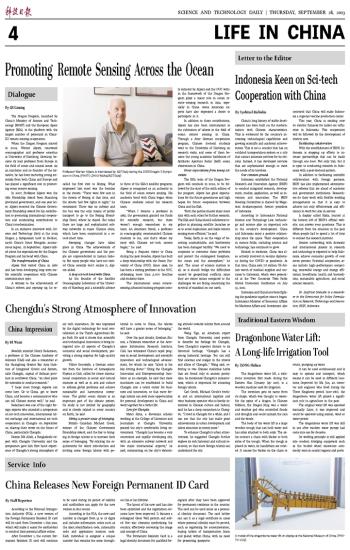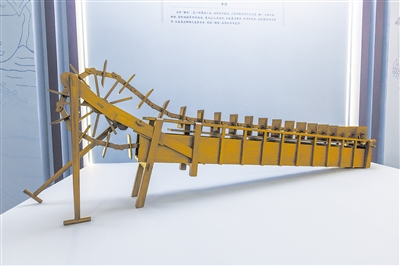
 |
| A model of the dragonbone water lift on display at the National Museum of China. (PHOTO: VCG) |
The dragonbone water lift, a milestone invention first made during the Eastern Han Dynasty (25-220), is a wooden machine used for irrigation.
The invention gets its name from its shape, which was thought to resemble the spine of a dragon. In Chinese folklore, the Dragon King was a water and weather god who controlled floods and droughts and could unleash the rain and the winds.
The body of the water lift is a large wooden trough that can hold water and has axles attached to both ends. The axles connect a chain with blades to both sides of the trough. When the trough is placed in water, its handlebars are rotated. It causes the blades on the chain to rotate, pumping up water.
It can be used continuously and is easy to operate and transport, which means it can be used in different locations. Improved by Ma Jun, an inventor and engineer who lived during the Three Kingdoms period (220-280), the dragonbone water lift played a significant role in agriculture in the past.
The original water lift was operated manually. Later, it was improved and could be operated using animal, wind or water power.
The dragonbone water lift was still in use after modern water pumps had come into use for decades.
Its working principle is still applied into modern dredging equipment such as the bucket-wheel excavators commonly seen in coastal regions and ports.







